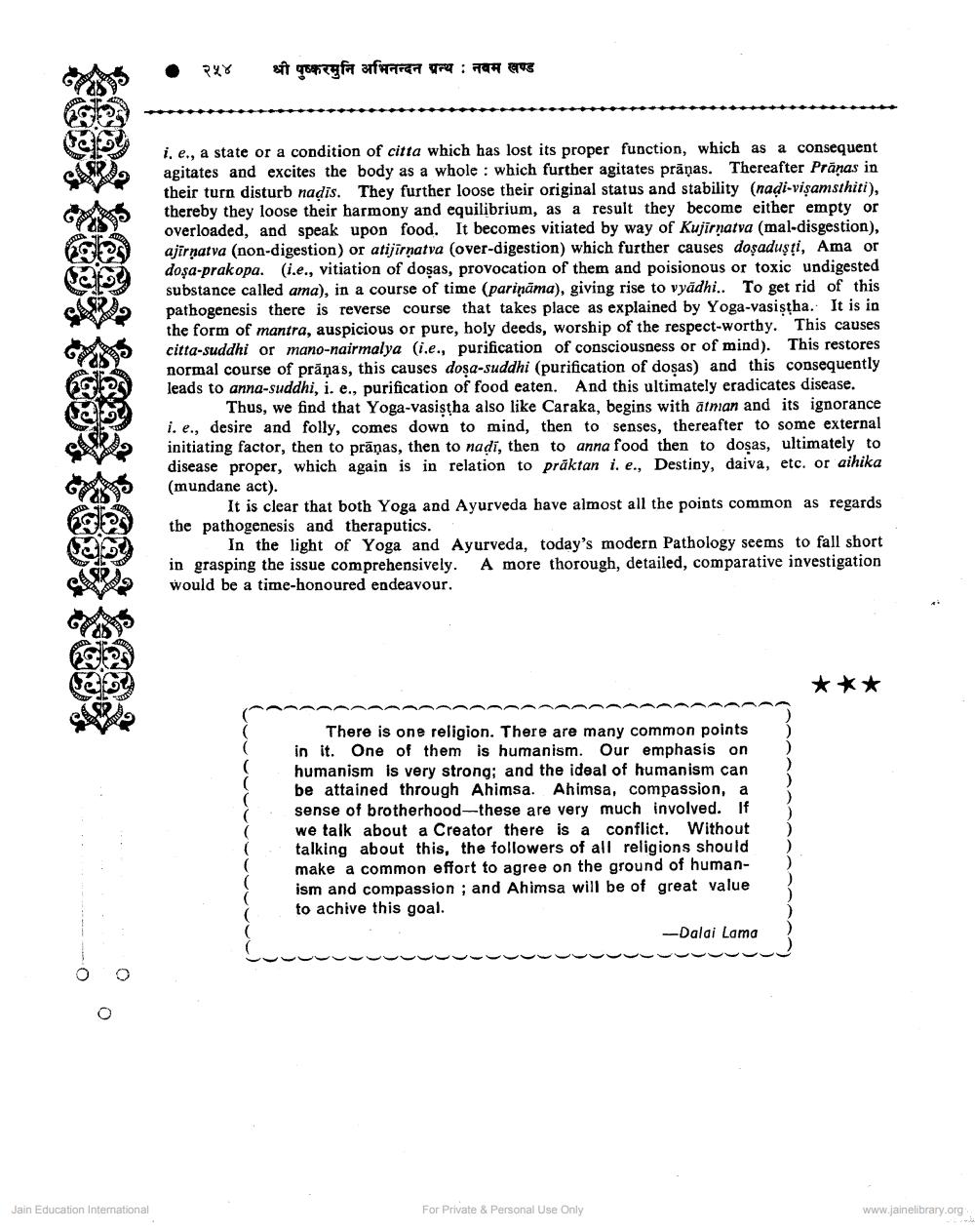Book Title: Concept of Pathogenesis with Special reference to Yoga and Ayurveda Author(s): S N Bhavsar Publisher: Z_Pushkarmuni_Abhinandan_Granth_012012.pdf View full book textPage 8
________________ * 254 श्री पुष्करमुनि अभिनन्दन ग्रन्थ : नवम खण्ड CH i, e., a state or a condition of citta which has lost its proper function, which as a consequent agitates and excites the body as a whole : which further agitates pranas. Thereafter Pranas in their turn disturb nadis. They further loose their original status and stability (nadi-visamsthiti), thereby they loose their harmony and equilibrium, as a result they become either empty or overloaded, and speak upon food. It becomes vitiated by way of Kujirnatya (mal-disgestion), ajirnatva (non-digestion) or atijirnatva (over-digestion) which further causes dosadusti, Ama or dosa-prakopa. (i.e., vitiation of dosas, provocation of them and poisionous or toxic undigested substance called ama), in a course of time (parinama), giving rise to vyadhi.. To get rid of this pathogenesis there is reverse course that takes place as explained by Yoga-vasistha. It is in the form of mantra, auspicious or pure, holy deeds, worship of the respect-worthy. This causes citta-suddhi or mano-nairmalya (i.e., purification of consciousness or of mind). This restores normal course of pranas, this causes dosa-suddhi (purification of dosas) and this consequently leads to anna-suddhi, i. e., purification of food eaten. And this ultimately eradicates disease. Thus, we find that Yoga-vasistha also like Caraka, begins with atman and its ignorance i. e., desire and folly, comes down to mind, then to senses, thereafter to some external initiating factor, then to pranas, then to nadi, then to anna food then to dosas, ultimately to disease proper, which again is in relation to praktan i. e., Destiny, daiva, etc. or aihika (mundane act). It is clear that both Yoga and Ayurveda have almost all the points common as regards the pathogenesis and theraputics. In the light of Yoga and Ayurveda, today's modern Pathology seems to fall short in grasping the issue comprehensively. A more thorough, detailed, comparative investigation would be a time-honoured endeavour. Neem * ** mo There is one religion. There are many common points in it. One of them is humanism. Our emphasis on humanism is very strong; and the ideal of humanism can be attained through Ahimsa. Ahimsa, compassion, a sense of brotherhood-these are very much involved. If we talk about a Creator there is a conflict. Without talking about this, the followers of all religions should make a common effort to agree on the ground of humanism and compassion ; and Ahimsa will be of great value to achive this goal. -Dalai Lama Jain Education International For Private & Personal Use Only www.jainelibrary.orgPage Navigation
1 ... 6 7 8
